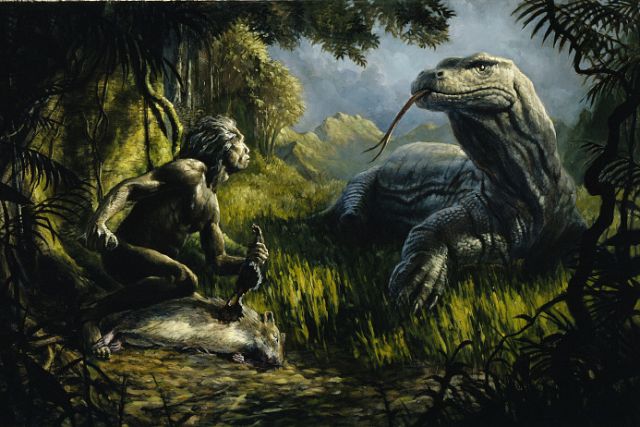Around 17,000 years ago, on the Indonesian island of Flores, a unique species of ancient human lived. This tiny but intelligent hominin, named Homo floresiensis, has become one of the greatest enigmas in paleoanthropology.

Matthew Tocheri, a paleoanthropologist from the Smithsonian Institution in Washington, D.C., carries a special replica in his backpack. In a modest Indonesian hotel room, he carefully lays out the bones—shoulder, forearm, pelvis, legs, and finally the skull, no larger than a grapefruit. Though it might feel eerie at first glance, the display is a replica—the original skeleton, known as LB1, is securely stored in Jakarta.
Who Was Homo floresiensis?
LB1 stands for Liang Bua 1, named after the cave on Flores where the remains were unearthed in 2003. The skeleton's small stature—just over one meter tall—earned it the nickname "hobbit," echoing the characters from J.R.R. Tolkien's novels. While the skeleton might resemble that of a child, worn teeth and arthritic joints suggest LB1 died around age 30.
Its anatomy is astonishing. The cranial capacity was only 417 cubic centimeters—about the size of a chimpanzee’s brain, and three times smaller than that of modern humans. The shoulder structure is similar to Homo erectus, while facial features evoke Homo habilis, a tool-using ancestor from 1.5 million years ago.
Even more surprising is the pelvic bone, closely resembling that of Australopithecus Lucy, despite the two being separated by continents and over 3 million years. Yet, LB1 lived just 18,000 years ago—at a time when it was believed only Homo sapiens remained.
"Aliens would surprise me less than the remains of LB1," admitted Peter Brown, the paleoanthropologist who classified the find as a new species.
Excavating the Cold Hole
The entrance to Liang Bua Cave—translated as "Cold Hole"—is wide, embedded in a limestone wall tangled with roots. Inside, researchers like Tocheri and Indonesian colleagues from ARKENAS (the national archaeological institute) work beneath stalactite-lined ceilings.
Excavation leader Thomas Sutikna has worked in the cave since 2001. Bamboo ladders lead into a 16-meter-deep shaft where teams dig through layers of earth. Above lie remnants of Homo sapiens, who arrived around 11,000 years ago, alongside animals like pigs, deer, and monkeys.
In 2001, a layer of hard volcanic ash initially stopped excavations. Sutikna insisted on continuing, and the layer eventually crumbled—revealing a hidden chamber with charcoal, burned bones, and ancient stone tools. Beneath this, scientists discovered the remains of Homo floresiensis.
Debates and Controversies
The discovery rocked the scientific world. Some accused lead researcher Mike Morwood of misleading the field. Skeptics claimed LB1 was merely a modern human with dwarfism. One critic alleged that the teeth had fillings, suggesting the skeleton was less than 100 years old. An Indonesian scientist even temporarily took the bones to conduct his own analysis.
Despite the uproar, further excavation undermined the dwarfism theory. Additional skeleton fragments—possibly from five or six other individuals, some even smaller and much older—were found in the cave. The oldest remains date back about 95,000 years, long before Homo sapiens reached Southeast Asia.
Life on Flores: Tools, Food, and Ingenuity
Homo floresiensis were surprisingly resourceful. The team uncovered around 100,000 stone tools, many made using simple flaking techniques. Though a few pieces showed sophisticated craftsmanship, experts believe this was coincidental.
Next to the tools, scientists found bones with cut marks—evidence of hunting. Paleontologist Jatmiko, sorting through the finds in the cave, revealed the hobbits’ culinary tastes: giant rats. These rodents, nearly half a meter long, were likely roasted on skewers for meals.
A Lasting Mystery
The discovery of Homo floresiensis challenged long-held beliefs about human evolution. Their existence suggests that small-brained hominins survived far more recently than previously thought, possibly isolated on Flores for tens of thousands of years.
Despite decades of research, key questions remain: Where did they come from? How did they reach Flores? And what ultimately led to their disappearance?
For now, the hobbit of Flores remains one of science’s most captivating puzzles—a relic of our complex and still-unfolding story.
You can add one right now!